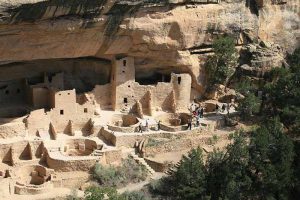 The built environment has a vast impact on natural environment, human health, and the economy. In the U.S., buildings account for 39% of total energy use and 12% of total water consumption. Green building describes a set of policies and practices to ensure buildings are built and used in ways that are as environmental responsible and resource-efficient as possible from construction to demolition. It is a holistic concept that starts with the understanding that the built environment can have profound effects, both positive and negative, on the natural environment, as well as the people who inhabit buildings every day. Green building is an effort to amplify the positive and mitigate the negative of these effects throughout the entire life cycle of a building.
The built environment has a vast impact on natural environment, human health, and the economy. In the U.S., buildings account for 39% of total energy use and 12% of total water consumption. Green building describes a set of policies and practices to ensure buildings are built and used in ways that are as environmental responsible and resource-efficient as possible from construction to demolition. It is a holistic concept that starts with the understanding that the built environment can have profound effects, both positive and negative, on the natural environment, as well as the people who inhabit buildings every day. Green building is an effort to amplify the positive and mitigate the negative of these effects throughout the entire life cycle of a building.
While there are many different definitions of green building out there, it is generally accepted as the planning, design, construction, and operations of buildings with several central, foremost considerations: energy use, water use, indoor environmental quality, material section and the building’s effects on its site.
USGBC, LEED, and GBI
Two of the most commonly used green building rating systems in the U.S are the U.S Greening Building Council’s (USGBC) Leadership in Energy and Environmental Design (LEED) and the Green Building Initiative’s (GBI) Green Globes. LEED acts as a framework for decision-making for project teams in all of these areas, rewarding best practices and innovation and recognizing exemplary building projects with different levels of LEED certification.

Green building existed before LEED even before USGBC was established in 1993. Some practices, such as using local and renewable materials or passive solar design, date back millennia. The Anasazi in the Southwest built entire villages so that all the homes received solar heat in the winter. The contemporary green building movement arose out of the need and desire for more energy efficient and environmentally friendly building practices.
The oil price increases of the 1970s spurred significant research and activity to improve energy efficiency and find renewable energy sources. This combined with the environmental movement of the 1960s and 1970s led to the earliest experiments with contemporary green buildings. Many great green buildings ideas were being circulated and used prior to LEED’s development in the mid to late 1990s, but there was no central mechanism for codifying them or ensuring their effective implementation.

Today, a LEED plaque is a universal mark of distinction, signifying that the building was constructed or is being operated to be healthy, high-performing and resource efficient. More than 60,000 commercial projects worldwide are participating in LEED, with 1.7 million square feet certifying every day. LEED has also spawned an entire green building industry, expected to be worth up to $248 billion in the U.S. by 2016. So far more than 100,000 housing units were certified by the LEED for Homes program.
 0
0
